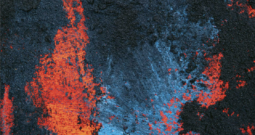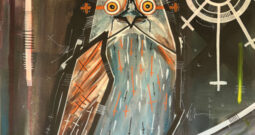from the editor's desk

Review of ‘Charlie Twirl’ by Alan Gould
Gould, Alan. Charlie Twirl. Crawley: UWAP. RRP $22.99. 100pp. ISBN: 9781742589268
Veronica Lake
Alan Gould, in his poetry collection Charlie Twirl, writes with a deeply entrenched awareness of music. Musicality informs many of the poems with rhythms, cadences and strong patterns of language. Traditionally, all poetry has at its core this facet of musicality. Our first nursery rhymes embody simple beats, strong rhymes, definite structure and refrains that stick in our heads forever. Gould has taken these traditional ingredients of poetry and crafted a collection of poems that connect strongly with music and art that has had an impact on him.
Using music as one source of inspiration, many of Gould’s poems explore emotions and deliberately employ traditional poetic form to pay homage to various composers. It is customary for ekphrastic poetry to be written as a response to visual art, but has widened to include music, poetry or even dance. Alan Gould not only alludes to composers and their work, but also the work of poets, novelists and playwrights. In this collection, he uses these allusions as a springboard for his own creative inspiration. To fully appreciate the subtlety of his writing, the reader needs to be able to draw on their own cultural capital. While the poems stand alone, knowledge of the various composers, poets, authors and their works mentioned in titles and within the lines can only serve to enrich the reading experience.
From Sibelius to Ralph Vaughn Williams, Gould writes poetry that connects directly to their creation of music, utilising sound and rhythm. Many of the poems adopt the form of quatrains or couplets, all with palpable and clever rhyme embedded in their lines. In ‘Making Lines While Listening to Music’, Gould ponders the ability of music to transpose our heartbreak, to ‘take my fret and make it rhapsody.’ (10) He is instantaneously uplifted and moved from the grind and difficulty of writing poetry to a freedom of expression that is joyful. The music makes it so.
For music neither pleads nor asks
in its airy arabesques,
will leave no footprint and no husk
and all its ventures are high risk. (10)
There is a definite sense of ‘play’ running through the poems. Gould’s mastery of rhyme is often amusing and sometimes irreverent. In ‘It’s Bird Week’, he maps the week referring to different Australian birds and catches their behaviour exactly.
We’re clubbing on the Friday with the jittery rosellas
who jump up on their bar stools if approached by uncouth fellas. (28)
Gould’s use of the rhetorical question feels deliberately provocative in some instances, such as in ‘Her Lovely Stepping Out’
So are your fingers in my hair?
Have I got skilful feet?
Why is the sand between our toes
so cold despite our heat?
These questions are quite saucy, and suggestive of a sensuality that is explored later in the poem.
Can I step in where you step out
or will my steps be previous? (79)
The reader is invited to examine what is actually going on during the course of the dance. Is it just a series of steps, or is there some kind of courtship proceeding? The music referred to in this poem is Percy Grainger’s ‘Molly by the Shore’, a lilting folk tune, one whose melody is lively, cheerful and a definite invitation to dance. The melody is strongly marked with four beats to the bar, as are the beats in each line making up the quatrains of the poem. Gould has connected the music with the poetry where ‘melody must track its shift, / in ebb and flow of love.’ (79) through the patterns of language.
A comic touch is evident in the poems ‘Getting the Latin’ and ‘We Boomer Boys’. (98) The quatrains of ‘Getting the Latin’ are full of onomatopoeia and the lines are end stopped by rhyme, creating a boisterous examination of the torture of the classroom in days gone by;
for crepitamus, crepitare,
we creak, we crackle and we clatter
down the language estuary
absorbing all your arcane matter, (93)
yet there is also the gentle appreciation of the Master reading the war poems of Sassoon and Owen,
you read us Owen, and Sassoon,
so tenderly as to affirm
that dour and kindness are one tune. (93)
The title poem ‘Charlie Twirl’ gives a name to the unknown man who danced in the streets of Sydney and doffed his hat for the cameras in 1945, in celebration of the ending of the war with Japan. ‘when dance outdances personal claim’ (44). His dancing and his impetuous pirouette have lived on, even after the passing of time. Art does that, catches something ephemeral and breathes life into it so it can be shared beyond the individual and that which is personal. This moment is at the heart of the collection, in that it responds to the transient nature of beauty and joy.
The collection ends with an homage to Hildegarde von Bingen, a 12th century abbess who combined both poetry and music in her creative life. She was famous for her musical monophonic music, a little like plainsong. The idea of flow and counter-flow is important in her work and in the final poem ‘O Ignis Spiritus’, Gould mimics that movement using oppositions within a sentence to create patterns of thought that constantly shift and question the nature of the universe.
I hear a voice and voice, then a counter-voice,
and these flow lake as dawn or gleam-of-stone,
and
Here is a flow, and here a counter-flow
where voice is small in its immensity (103)
Musical and literary terminology is entrenched in this collection. Every poem has layers, and links many of the artists of our world with ideas behind the making of art. Gould references authors, musicians, the bible, folk songs and sea shanties: all things that illuminate our world and bring us joy. The collection weaves in and out of these references as it ponders that bright elusive twirl, to which we as humans respond and remember as being important to us.
Veronica Lake is a Churchill Fellow (2010) and a teacher long associated with Literature. She collates and edits Primo Lux, an annual student anthology of poetry. She is a member of the Voicebox Collective, OOTA Writer’s Group and Poetry WA. Her poetry has been published in journals in Australia and New Zealand.





